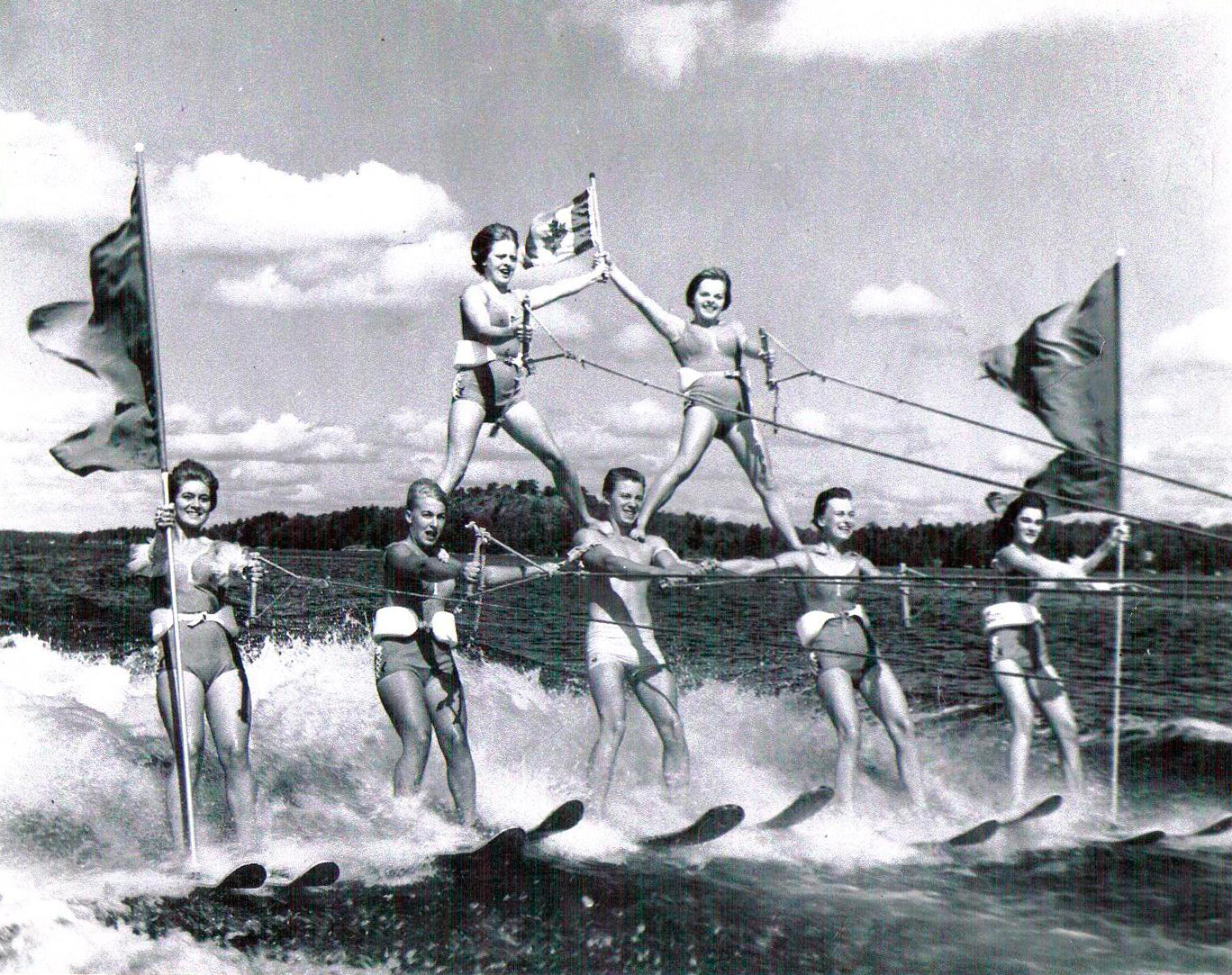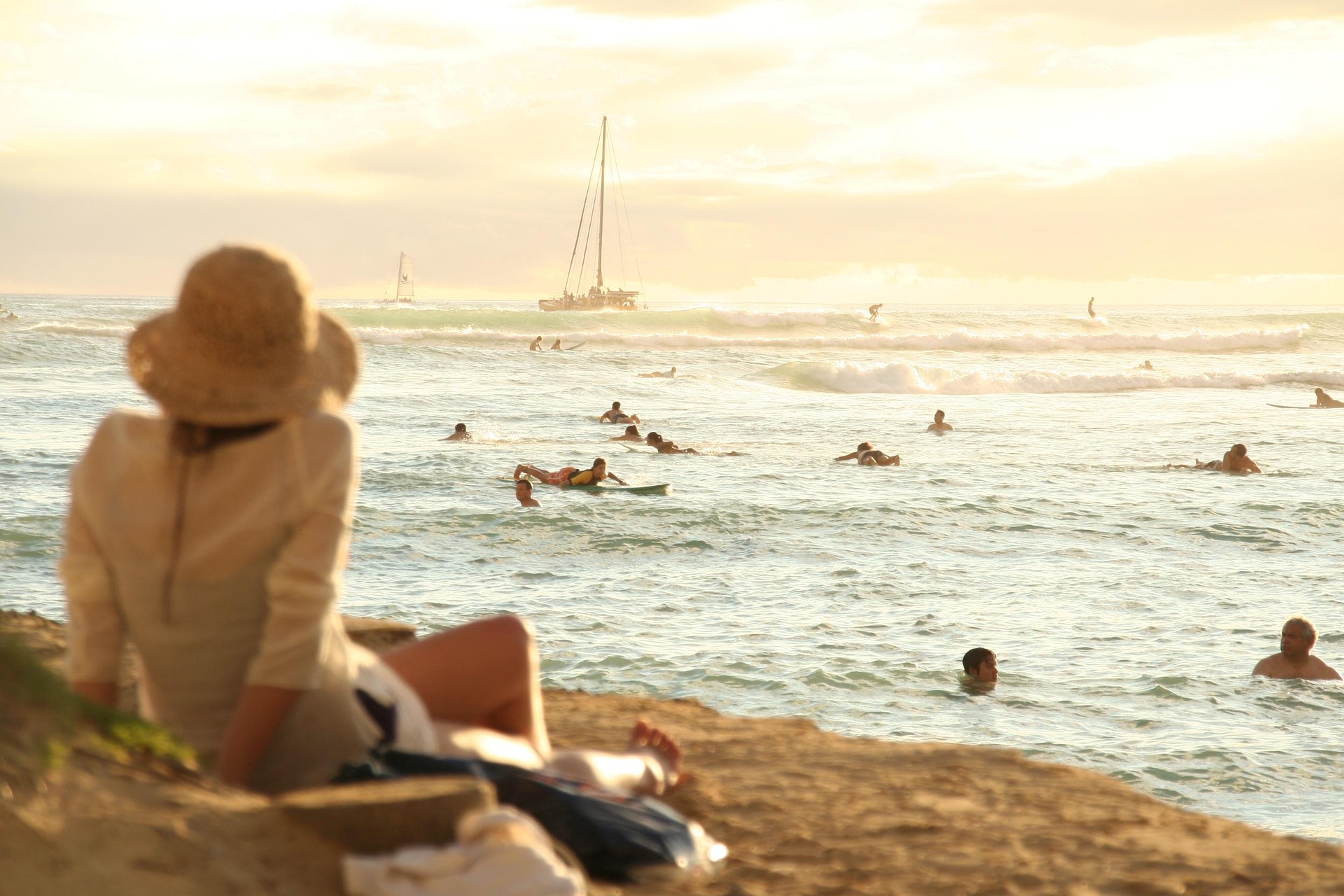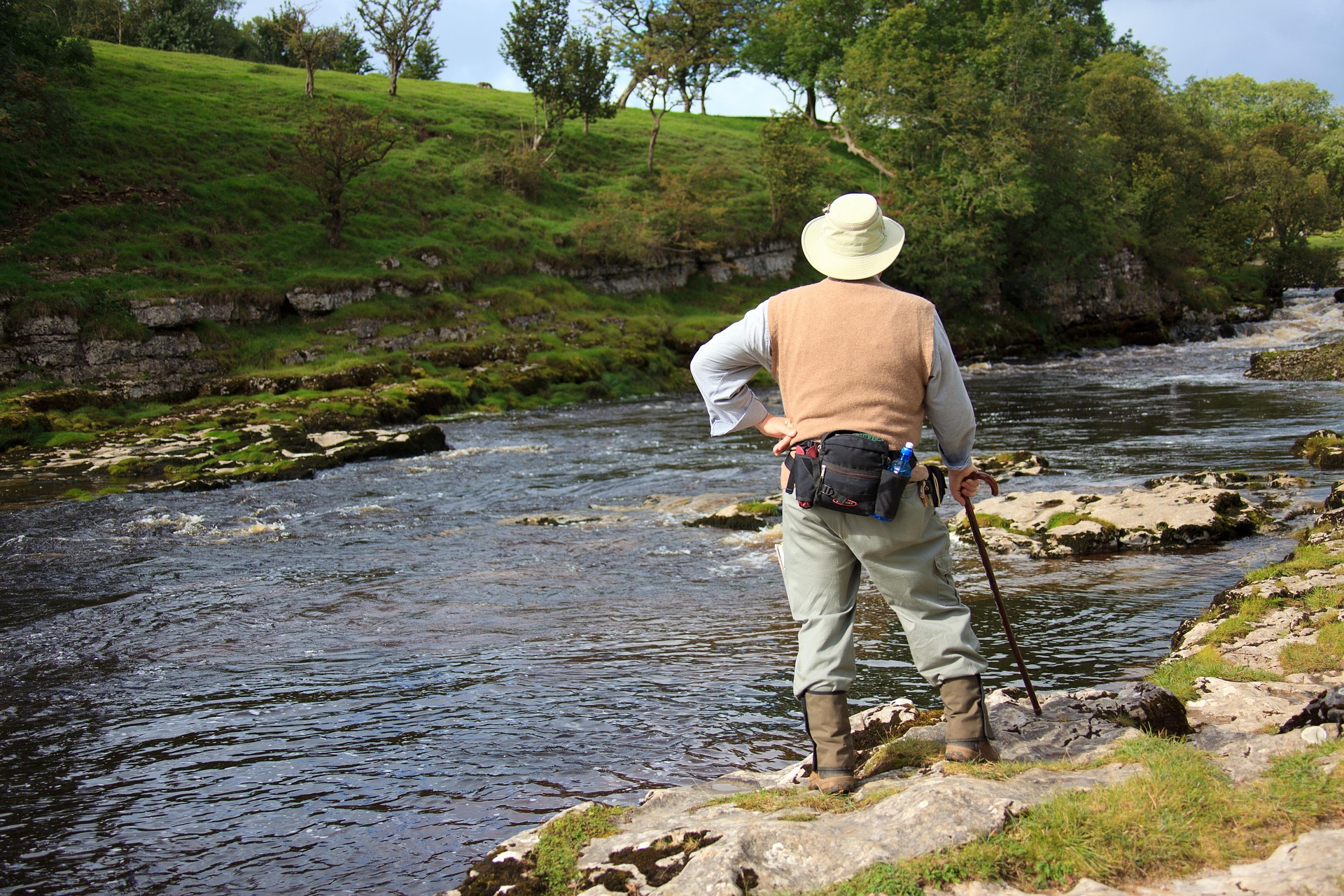Once upon a time, vacations were a relaxing break from our hectic lives. Now, however, they move at a very different pace.
◊
“What did you do on your vacation?”
It’s an innocuous question – one you’ve likely been asked more than once in your lifetime. You’ve probably asked other people that exact same question just as often. Sometimes you ask because you genuinely want to know, and other times you might ask because it is the go-to question for recently returned vacationers. But hidden behind the cordiality of water-cooler chatter, there is an assumption being made about how exactly a vacation should go.
Vacations, we think, should be remarkable, memorable, worthwhile deviations from your routine life of work, family and hobbies. Otherwise, why go?
Social media has drastically changed how I visualize what a vacation should look like. I see friends at the beach with other friends, distant relatives conquering mountains, or people I hardly know posting pictures of a ski vacation somewhere I could not point to on a map. Taking a social media–worthy holiday involves a remarkably beautiful destination, activities that show how adventurous you are, and photographs that capture how relentlessly happy a vacation has made you feel.
Whether or not you plan to share your vacation with the world, there’s no doubt that the name of the game with modern vacations is staying occupied. When the global lockdowns were initiated during the COVID-19 pandemic, many people’s meticulously orchestrated travel plans had to be reworked. To stay busy during forced downtime, people plotted and planned every last detail of an even more exciting vacation. These highly orchestrated trips have been dubbed “revenge travel” since travelers have returned to the roads, skies, and seas with a fervor.
Vacations today are a far cry from what they looked like a century ago. These days, people might seek jobs with unlimited paid time off and reject others where the vacation days might not align with these plans. Vacations are considered an essential part of “work/life balance,” but when they turn into international expeditions with jam-packed itineraries, the original notion that vacations should leave you happily unoccupied tends to veer off track.
Making travel plans? If you want to know what luxury really looks like, check out this revealing MagellanTV documentary.
When Did We Start Relaxing?
As long as people have had enough money and time to maintain their lifestyle despite not working, there have been vacations. So, for the vast majority of human history, this has meant that only those in the uppermost social, political, and economic classes have been able to partake. The idea of never taking a vacation at least once in a lifetime might seem unfathomable to most of us today, but not too many generations ago it was just a fact of life.
Initially For The Ancient Elites
Vacations and leisure go hand in hand, but the additional element of travel in the former is what sets them apart. In ancient times, everyday people would have engaged in leisurely activities like going to a bathhouse, exercising in nature, or attending sporting events. While people today will travel halfway across the planet to see where Romans bathed or spectated, back then, people relied on the resources in their local communities for sources of recreation and relaxation.
 Roman baths (Credit: Eduardovieiraphoto, via Pixabay)
Roman baths (Credit: Eduardovieiraphoto, via Pixabay)
Wealthier people have always been able to travel more, but not all journeys to new places necessarily meant they would be able to kick their feet up and relax. Visits to foreign lands might have revolved around a visit with a dignitary or efforts to expand one’s social circle (and consequently one’s status in society). In the age of exploration, traipsing through jungles and crossing oceans was all the rage – but expeditions with the intent of claiming new territory were often one-way journeys, not to be confused with holidays.
Explorers risked life and limb marching into the unknown. The reward for finding something new would be a payday that could fund a lifestyle potentially replete with vacations in the future. Monarchs from all over Europe paid hefty sums to fund expeditions, but they themselves would have not “vacationed” in the hotspots we know today.
Fashionable Outings
While not a vacation per se, taking “The Grand Tour” was a frequent practice among well-to-do men in Europe from the 17th through 19th centuries. Being a grand tourist meant rounding out your education through practical, on-ground means by visiting historic libraries and chatting with artists. Be it a sojourn in Paris, a multi-month retreat to the countryside of Switzerland, or an extended stay in Italy, these journeys were elaborate adventures that many would have dreamed of – but few would have enjoyed.
 Planning the Grand Tour. Painting by Emil Brack (Source: Wikimedia Commons)
Planning the Grand Tour. Painting by Emil Brack (Source: Wikimedia Commons)
Prior to and throughout the 19th century, taking a holiday was contingent on having servants who could run a household in your absence. Just as in ancient times, your socio-economic status determined whether or not a vacation would be in the cards for you. When the Industrial Revolution in Europe helped increase the wealth of factory owners to unprecedented levels, more people than ever were able to breach the barriers to an upper-class standard of living.
Advancements in transportation technologies enabled by the advent of the steam engine made regional and international travel quicker, more affordable, and more appealing to people looking for a getaway rather than an adventure. Taking vacations was seen as a status symbol, so there was an element of maintaining one’s social standing that became wrapped up in a family trip to the beach, especially if one owned a second home there.
20th Century Developments
By the early 1900s, vacations were taking root in the United States, thanks in part to changes in the calendar of many public school systems. In the mid-19th century, children’s public schooling in rural areas aligned with agricultural necessities. Kids would be released from school during the spring and fall, not for vacation but to work on family farms.
Meanwhile, in urban city centers, students and their teachers would take time off in the summer due to the overwhelming heat of pre–air-conditioned buildings. The inconsistent schedules of students across the country made standardization difficult. Eventually, the urban school calendar prevailed, as advancements in farm technologies reduced the reliance of rural families on their children’s labor.
 A ski pyramid at Kirk Kove Resort in Arden, Ontario, Canada, circa 1960s (Source: Cloyne and District Historical Society, via Wikimedia Commons)
A ski pyramid at Kirk Kove Resort in Arden, Ontario, Canada, circa 1960s (Source: Cloyne and District Historical Society, via Wikimedia Commons)
An excerpt from The Journal of Education in 1914 estimates five percent of children went with their families to “the country and summer resorts.” Resorts have been around for centuries, but they experienced a resurgence in the mid-20th century as the world was recovering from the horrors of two world wars. Savvy marketers appealed to people’s desire to escape reality by proposing month-long stays at mountain or seaside resorts.
Thanks to the GI Bill in the United States, military veterans gained training and education for higher-paying jobs, which in turn provided sufficient income to indulge in lengthy summer vacations. And this trend wasn’t limited to the U.S. In fact, workers’ rights advocates around the world won guarantees of time off, fundamentally changing how people saw vacations fitting within their lives.
R&R in Present Times
The creation of the commercial airline industry, the expansion of cruise boats, and improvements to highway systems facilitated recreational travel. Data from the Pew Research Center shows that somewhere between 11 percent and 22 percent of the U.S. population changed their hometown between 1946 and 2008. With family members settling further away from one another, time off work might be spent trekking to see relatives rather than lying on a beach in pursuit of the perfect sun tan.
According to the U.S. Travel Association, American usage of paid time-off (PTO) peaked in 1981 at 21.2 days off per year and reached a low point in 2014 when they took only about 16. Air travel volume dipped by two-thirds, which had ripple effects throughout the tourism industry worldwide.
PTO may include not only vacation time but also sick days, personal days, accommodations for appointments, etc.
During the COVID-19 pandemic, sociologists suspected that people might adapt and lean into vacations (or “staycations”) that didn’t require traveling to another place. They surveyed people who traveled by car to see if they would reconsider their future vacation plans. Resoundingly, respondents said they would still embark on their dream vacations as soon as air travel felt less risky again. The Bureau of Transportation reports that the average American household spent a total of $1,095 on intercity transportation in 2023 with more than half of that going toward airline fares. Clearly, travel is in and not going anywhere.
Where Did The Stressors Come From?
Comparison is the thief of joy and, thanks to social media, never has it been easier to compare your own travel experiences to someone else’s. Where once a trip to an exotic destination might have existed only in a person’s imagination, now you can see it in the photos of thousands of others who have been there before you, maybe on a sunnier day.
Your Vacation as a Commodity
When you travel you could look like a walking wallet to the community that you are visiting. If you’ve budgeted for dining, excursions, experiences, and the always-essential tchotchkes, every business you pass is vying for your attention. The travel and tourism industry made up approximately 10 percent of the global GDP in 2024, a percentage that is expected to grow in coming years.
 Enjoying a beach in Hawai’i (Credit: dpung, via Pixabay)
Enjoying a beach in Hawai’i (Credit: dpung, via Pixabay)
The number of tourists visiting any given place might be increasing at an alarming rate, but every dollar, pound, or euro is valued by people whose businesses rely on vacationers’ spending habits. It can be stressful to be seen as a cash cow or “living the high life” when it might be your one indulgence in a very long time. Simultaneously, there is pressure from friends and family for you to appear happy and put-together in your social media posts, as if a few perfect photographs of yourself are essential to justify the expense of a trip.
The Timing of Time Off
When onboarding for a job, finding the line that mentions the holidays and vacation policy can change your plans for the next year. It might determine when you will see your family next, if you’ll be able to make the once-every-five-years reunion with your college friends, or when you can take a break and recharge. If you are fortunate enough to have generous PTO, you can map out your life for the next year.
Not everyone is guaranteed that, however. The Center of Economic and Policy Research found that one in four American workers don’t receive paid time off for vacation or holidays. For those workers, taking a day off for a vacation will be deducted from their paychecks no matter how loyal and hardworking they may be.
What Vacations Look Like
A vacation can be a cozy visit to your childhood home, or it can be an all-inclusive, all-you-can-eat, as-many-activities-as-you-can-fit-in weekend in a new destination. Perhaps you pick a holiday destination based on whichever image stands out the most in the endless scroll of brightly colored photos online. Maybe you buy a package that takes the onus of making any decisions at all off your plate.
With advances in translation apps, online banking, and GPS systems, you don’t need to speak the language, have the local currency, or even know where you are to get by and have a great time. On paper, it’s easier than ever to travel, but the act of exploring can be a teacher like no other. When traveling, you get a first-hand understanding of a place’s geography, history, and culture, and it can be one of the best ways to learn about yourself as well.
 Pausing by the river (Source: PublicDomainPictures, via Pixabay)
Pausing by the river (Source: PublicDomainPictures, via Pixabay)
There are a million ways any one vacation can go, but with an endless list of add-ons or brochures to sift through, whatever path you choose has myriad alternatives. However wonderful a time you have, you will be reminded that you might have missed something along the way.
Use the PTO and Learn to Let Go
Some call life a rat race, a vicious cycle, or a never-ending struggle. For those who coined these expressions, life might really feel like a Sisyphean exercise of working for the sake of work. Given this, perhaps we ought to revel more in the recent miracle that vacations, paid time off, and mental health days are becoming commonplace. Little in life is guaranteed, so when you have the chance to take a vacation, make sure you do.
Ω
Daisy Dow is a contributing writer for MagellanTV. Originally from Georgia, she now works in Chicago as a freelance writer focused on history, small businesses, and marketing strategies.
Title Image: Coping with a flight cancellation (Credit: Goffkein, via Adobe Stock)


